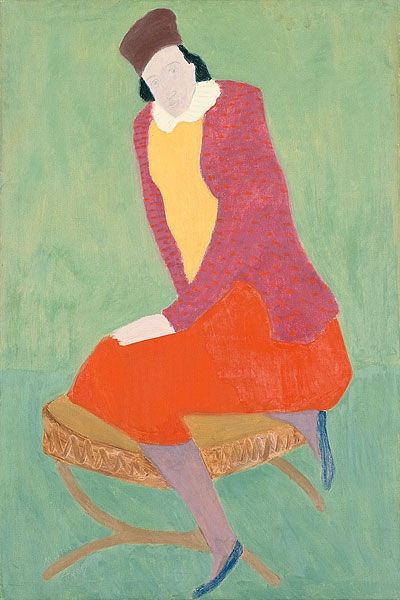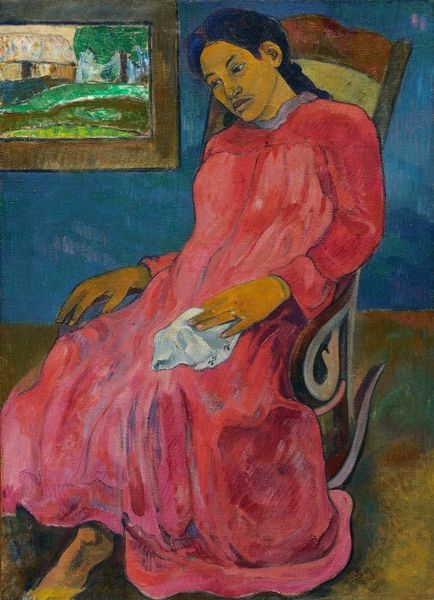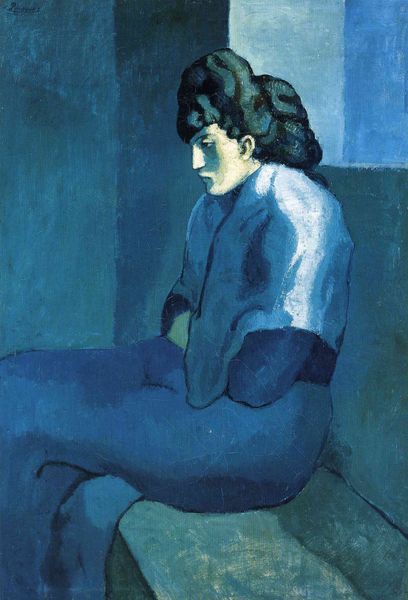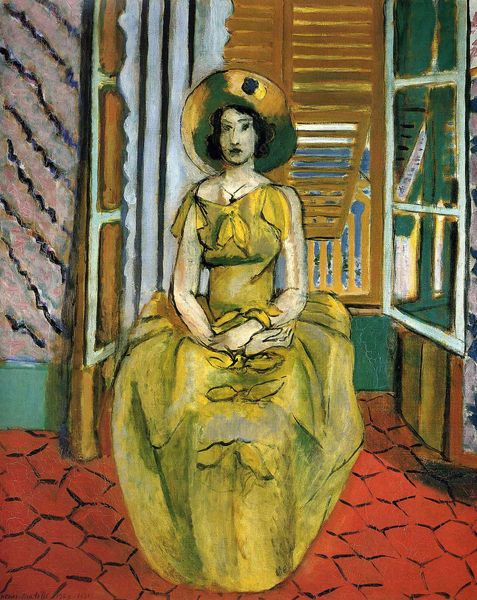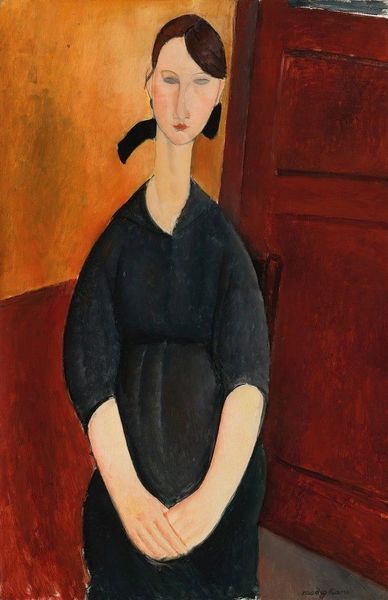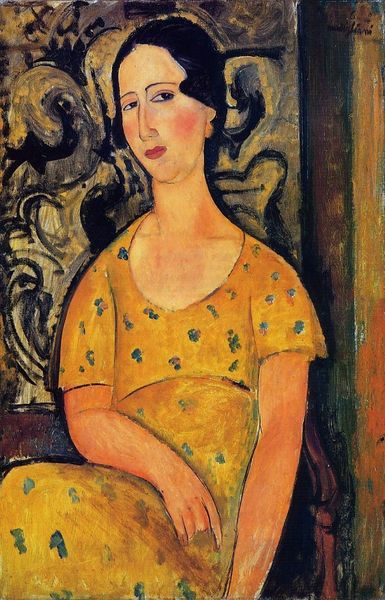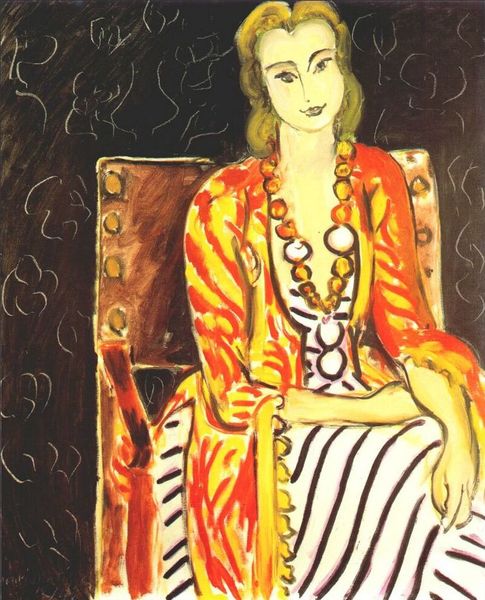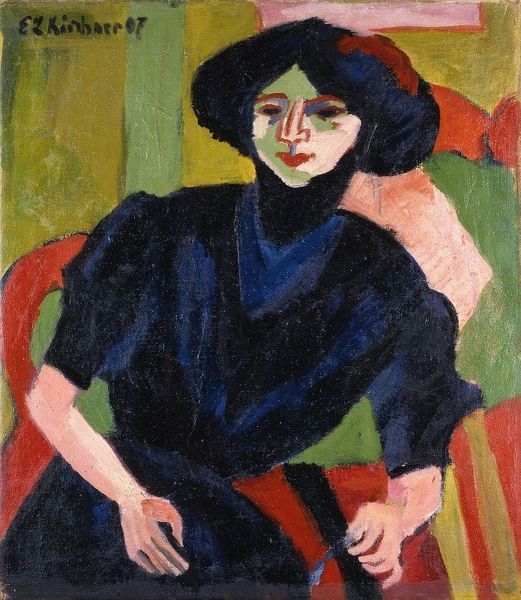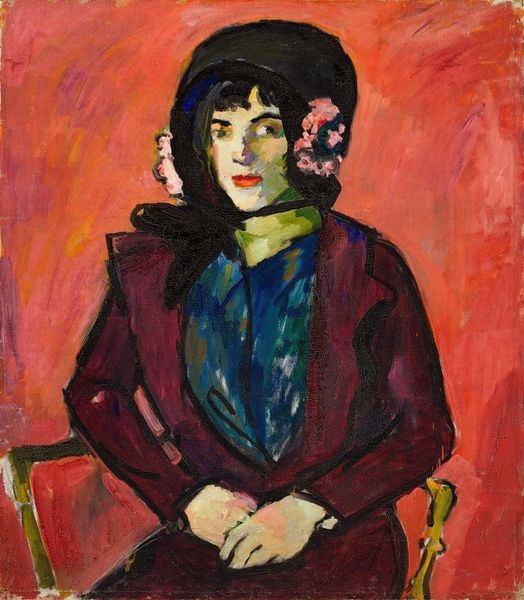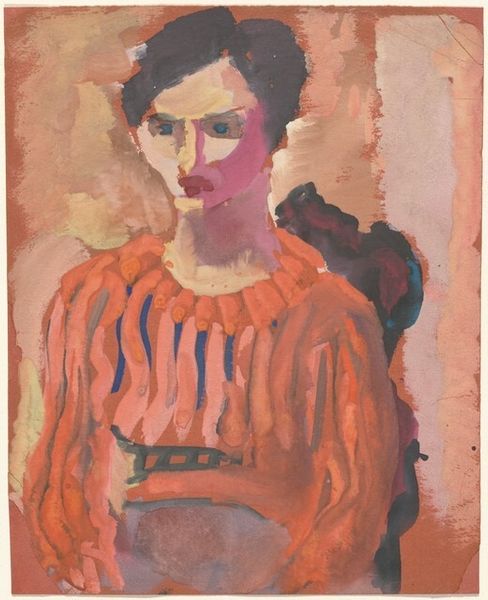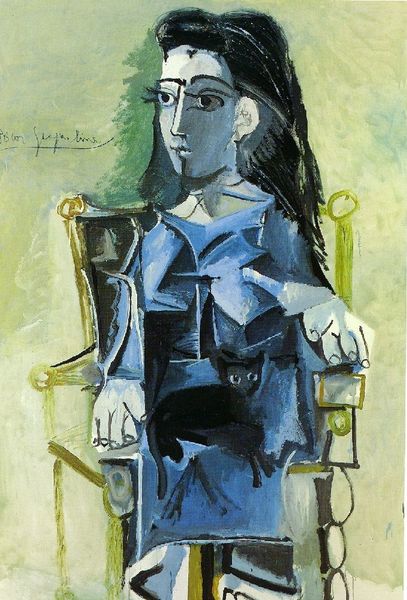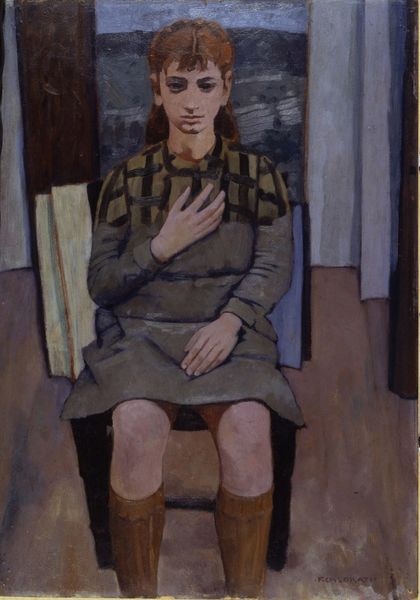
bay-area-figurative-movement
Copyright: Theophilus Brown,Fair Use
Editor: Here we have Theophilus Brown's "Woman in a Yellow Dress," created in 1990, an acrylic on canvas piece. I'm struck by the boldness of the colors and the flatness of the forms. What can you tell me about this artwork? Curator: It's interesting to consider the materiality of Brown's work. He uses acrylic, a relatively inexpensive and fast-drying paint that became popular in the mid-20th century. How does his choice of materials contribute to the painting's overall message? Editor: Well, the use of acrylic does lend a sort of accessibility to it. It lacks the weight or prestige, maybe, of oils, making it feel more modern. Is there a conscious intention behind using simpler materials like acrylic and a starker color palette? Curator: Absolutely. In 1990, there was already a long history of artists challenging the hierarchy of materials, questioning what constitutes "high art." Think about the labor involved, too. Acrylic allowed for a faster pace, which is key when reflecting a society built on faster production cycles. Editor: That's a great point! So the speed of the medium reflects a societal value... what about the woman’s dress being yellow – is that purely aesthetic, or could it reflect manufacturing processes of readily dyed material? Curator: Exactly. How readily and cheaply could this article be created en masse in the real world. And how does the depiction of this woman compare to images of women circulating in advertising and mass media? What is Brown suggesting about female representation and the commodification of image, even artistic image, in contemporary society? Editor: This definitely offers me a new way to approach the piece and the artistic intent of the artist. It’s interesting to think of a portrait as a reflection on commercial availability and production processes. Curator: Indeed, and it reveals how deeply the production and consumption of everyday items permeate the art world and our lives. It reminds us to look beyond the surface to consider how the social and economic context shapes what we see.
Comments
No comments
Be the first to comment and join the conversation on the ultimate creative platform.
